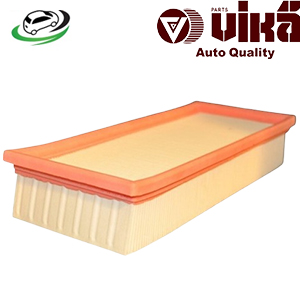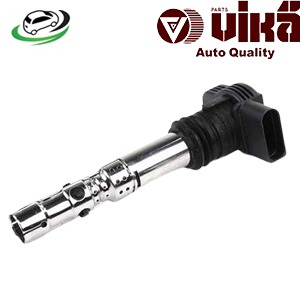-15%
Get AUDI A3 (8L1)/ A3 (8P1)/ A3 Sportback (8PA) / VW Bora I (1J2)/ Golf IV (1J1)/ Golf V (1K1)/ Passat B6 (3C2)/ Touran (1T1 1T2) Thermostat Housing 06A121111A
A thermostat housing is an essential component in a vehicle’s cooling system. It serves as the protective casing for the thermostat, a critical part responsible for regulating the flow of coolant between the engine and the radiator. This detailed explanation covers the purpose of the thermostat housing, its various types, how it operates, its benefits, and the importance of proper maintenance.
What is a Thermostat Housing?
The thermostat housing is the enclosure that houses the thermostat in an internal combustion engine. The thermostat itself is a temperature-sensitive valve that controls the flow of coolant through the engine and radiator. The thermostat housing connects the engine to the radiator via coolant hoses and plays a crucial role in maintaining the engine’s optimal operating temperature.
When the engine is cold, the thermostat remains closed, preventing coolant from circulating. As the engine warms up, the thermostat opens, allowing the coolant to flow through the radiator and dissipate heat. The housing acts as a connector and protective unit, ensuring that the thermostat functions properly and the coolant flows in the correct direction.
Thermostat housings are typically made from materials such as plastic, aluminum, or steel, depending on the vehicle’s design. They are generally mounted at the front or top of the engine, easily accessible for inspection and maintenance.
Functions of a Thermostat Housing
- Housing the Thermostat
The primary function of the thermostat housing is to enclose and protect the thermostat. This component is vital for controlling the engine’s temperature, and the housing ensures that the thermostat is securely in place and operating correctly. Without a properly functioning thermostat housing, the engine could overheat or operate inefficiently. - Regulating Coolant Flow
The thermostat housing is part of the coolant passage, allowing coolant to circulate between the engine and radiator. It ensures that the coolant is directed through the correct channels, facilitating efficient heat exchange. When the thermostat opens, the housing allows coolant to flow from the engine to the radiator, where it cools down before returning to the engine. - Preventing Coolant Leaks
The housing creates a seal where the thermostat is mounted, preventing coolant leaks that could result in engine overheating. A properly sealed thermostat housing ensures that coolant remains in the closed-loop cooling system, providing efficient heat regulation. Leaks in the thermostat housing can lead to a loss of coolant and cause engine overheating, which may result in significant damage. - Connecting the Cooling System
The thermostat housing acts as the junction point for the cooling system, connecting the engine and radiator via hoses. This setup allows for the regulated flow of coolant and contributes to maintaining the engine at the correct temperature. The housing often has additional outlets to connect to other components in the cooling system, such as sensors or bypass valves. - Housing Temperature Sensors
Some thermostat housings also contain temperature sensors. These sensors monitor the temperature of the coolant and send data to the vehicle’s engine control unit (ECU). This information is critical for adjusting engine performance and ensuring that the engine is operating within safe temperature ranges.
Types of Thermostat Housings
- Bolt-On Thermostat Housings
This is the most common type, which is secured to the engine block with bolts. These housings usually have a gasket or seal to prevent leaks. Bolt-on thermostat housings are typically made from aluminum or steel, making them durable and resistant to heat and pressure. They are easy to install and replace, making them popular in standard automotive applications. - Remote Thermostat Housings
Remote thermostat housings are not directly attached to the engine but are located along the coolant line. These are often found in high-performance or custom vehicles where space constraints or engine configurations require flexibility in cooling system design. Remote housings provide easier access to the thermostat and allow for more efficient coolant routing. - Integrated Thermostat Housings
In some modern vehicles, the thermostat and its housing are designed as a single, integrated unit. This means that when the thermostat fails, the entire unit must be replaced. Integrated housings are often made from plastic and are used in many newer vehicles due to their lighter weight and lower manufacturing costs. However, their plastic construction can make them more susceptible to cracking and leaks over time. - Aftermarket Thermostat Housings
Many aftermarket thermostat housings are available for vehicles, particularly in performance or off-road applications. These housings may be made from upgraded materials like billet aluminum or stainless steel, providing greater durability and corrosion resistance. Aftermarket thermostat housings can also offer better flow characteristics or support higher pressure and temperature ratings.
Benefits of a Properly Functioning Thermostat Housing
- Maintaining Optimal Engine Temperature
The thermostat housing plays a key role in helping the thermostat maintain the engine’s optimal operating temperature. Keeping the engine at this ideal temperature range improves fuel efficiency, performance, and longevity. If the housing fails or leaks, the engine could overheat or run too cold, leading to reduced performance or even severe engine damage. - Preventing Engine Overheating
By securely housing the thermostat and regulating coolant flow, the thermostat housing prevents engine overheating. Overheating can cause major engine damage, including warped heads, blown gaskets, and other costly repairs. A properly sealed thermostat housing ensures that coolant circulates effectively, reducing the risk of overheating. - Protecting the Thermostat
The thermostat housing safeguards the thermostat from external damage and contamination. Without this protection, the thermostat could fail prematurely, leading to coolant flow issues and engine temperature regulation problems. - Ensuring Leak-Free Operation
A well-maintained thermostat housing creates a tight seal that prevents coolant from leaking. Coolant leaks can reduce the effectiveness of the cooling system and lead to engine overheating or component corrosion. A high-quality thermostat housing made from durable materials will provide years of leak-free service.
Maintenance and Replacement Tips
- Inspect for Cracks or Leaks
Regularly inspect the thermostat housing for any signs of cracks, leaks, or corrosion. These issues can lead to coolant leaks, which may cause the engine to overheat. Pay attention to any coolant puddles under the vehicle or visible residue around the housing, which could indicate a leak. - Replace the Gasket
The gasket between the thermostat housing and the engine block plays a critical role in preventing leaks. Over time, gaskets can wear out, shrink, or crack, leading to coolant leakage. It’s important to replace the gasket during any thermostat or thermostat housing replacement to ensure a proper seal. - Clean the Mating Surfaces
Before installing a new thermostat housing, ensure that the mating surfaces (where the housing meets the engine block) are clean and free from debris or old gasket material. A clean surface helps ensure a tight, leak-free seal when the new housing is installed. - Monitor Coolant Levels
Low coolant levels can indicate a leak in the thermostat housing or another part of the cooling system. Routinely check the coolant reservoir and radiator levels to ensure there is no loss of coolant. If you find yourself frequently adding coolant, it could be a sign of a thermostat housing issue. - Use the Correct Torque
When installing a new thermostat housing, it’s important to use the manufacturer-recommended torque specifications for the bolts. Over-tightening can crack the housing, while under-tightening can lead to leaks. Using a torque wrench ensures the bolts are tightened to the correct level. - Consider Material Upgrades
If your vehicle’s original thermostat housing is plastic and prone to cracking, consider upgrading to an aftermarket aluminum or steel version. These materials provide greater durability and can withstand higher temperatures and pressures, making them more suitable for performance or extreme driving conditions. - Replace the Thermostat Simultaneously
If you are replacing the thermostat housing, it’s often a good idea to replace the thermostat at the same time. Since the two components work together, replacing them together can prevent future issues and ensure the cooling system is operating at its best.
Conclusion
The thermostat housing is an integral part of the engine’s cooling system, protecting the thermostat and ensuring the proper flow of coolant. Whether it’s made from plastic, aluminum, or steel, a functioning thermostat housing helps regulate engine temperature, preventing overheating and ensuring optimal performance. By maintaining the housing and replacing it when necessary, you can extend the life of your engine, improve fuel efficiency, and avoid costly repairs. Regular inspections, gasket replacements, and monitoring for leaks will ensure that your thermostat housing continues to perform efficiently.
Follow us on Facebook for more parts.




Reviews
Clear filtersThere are no reviews yet.